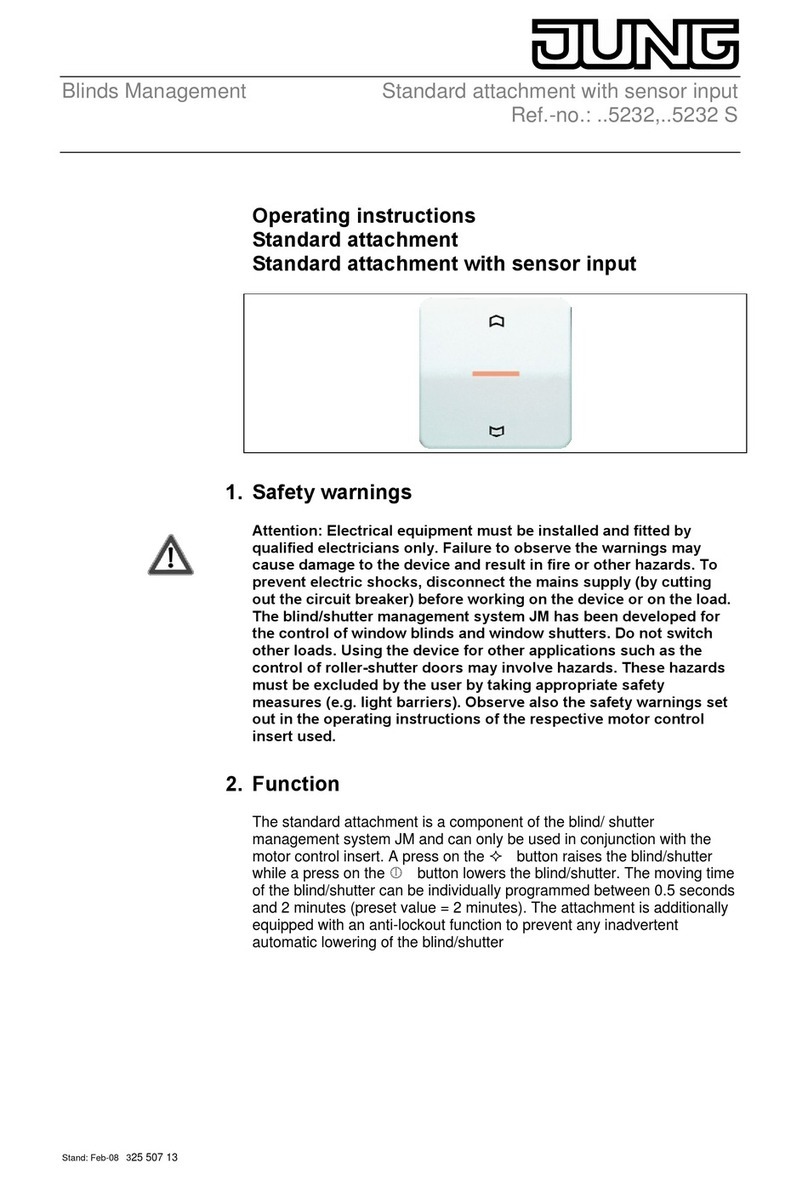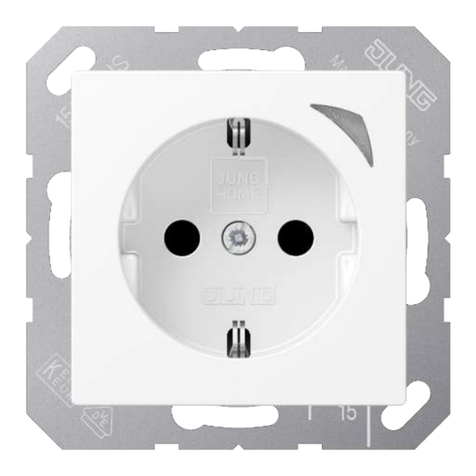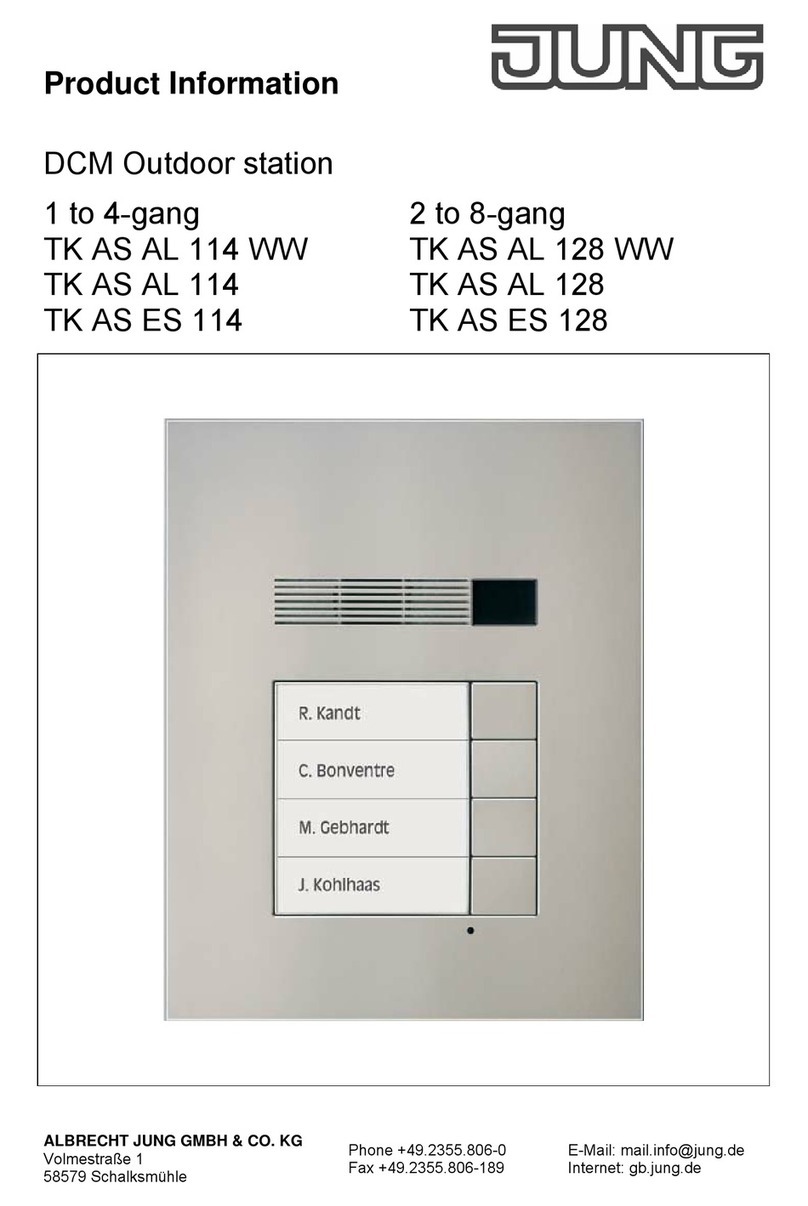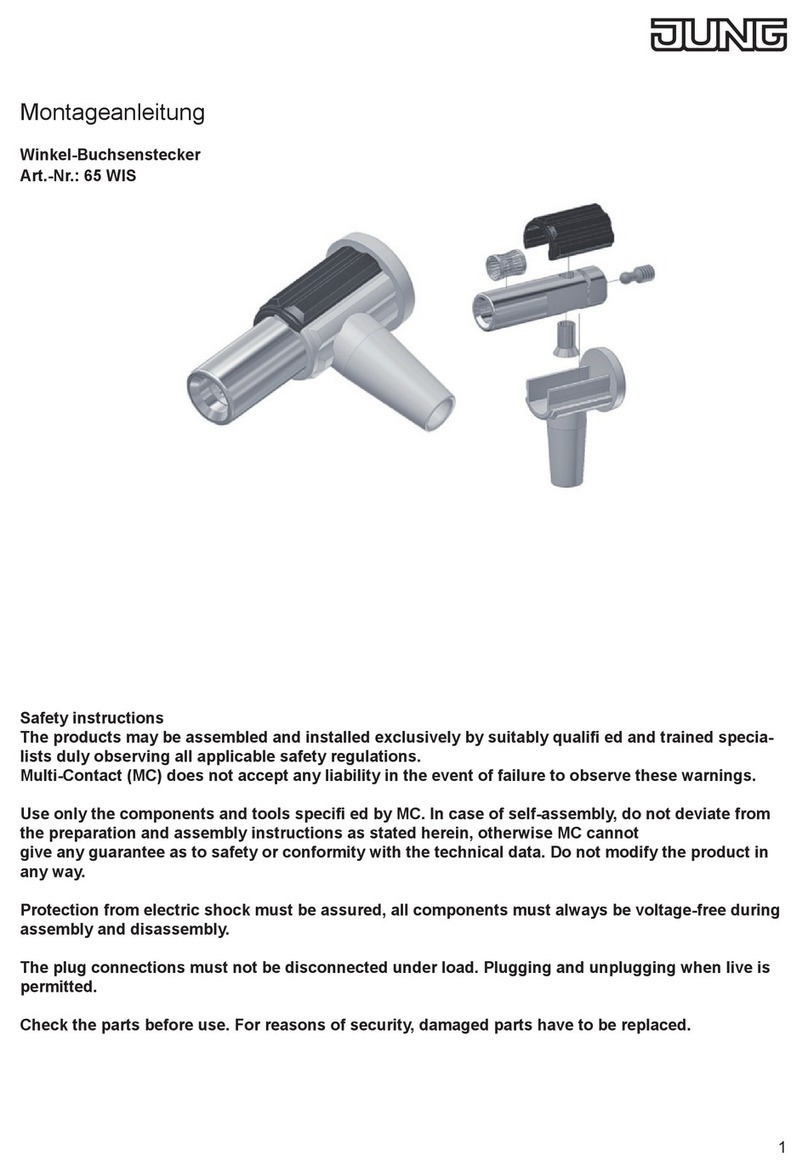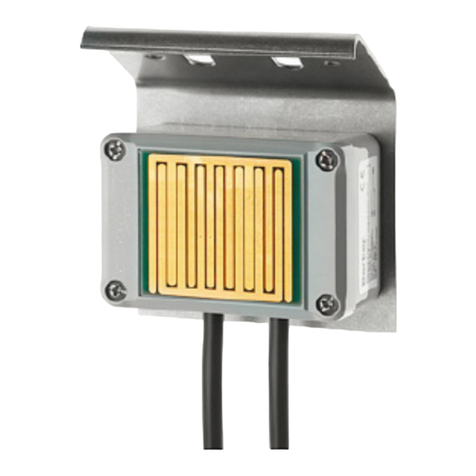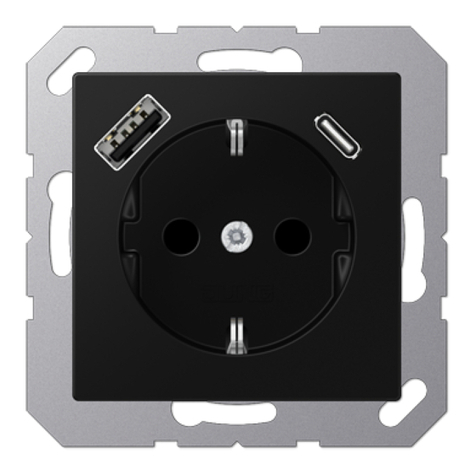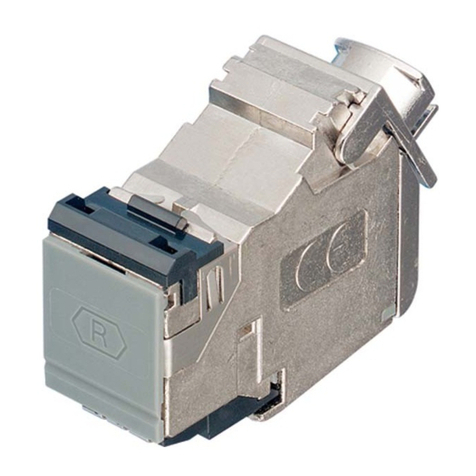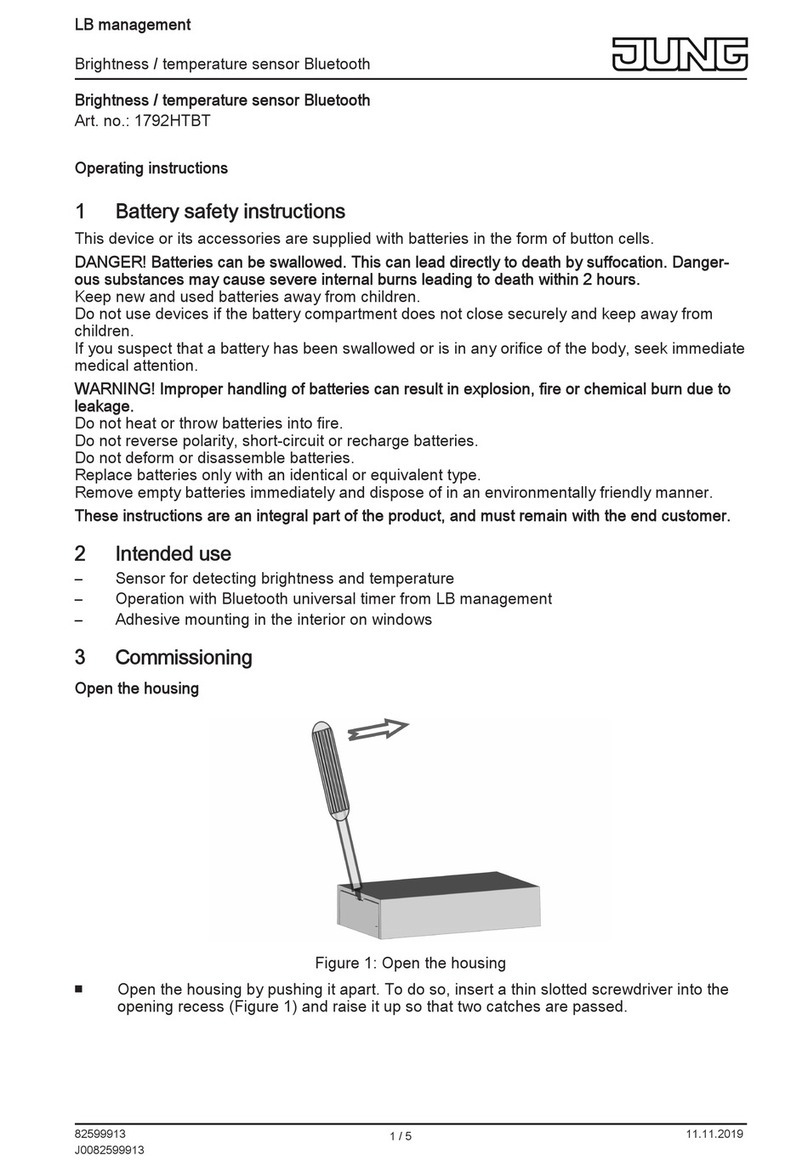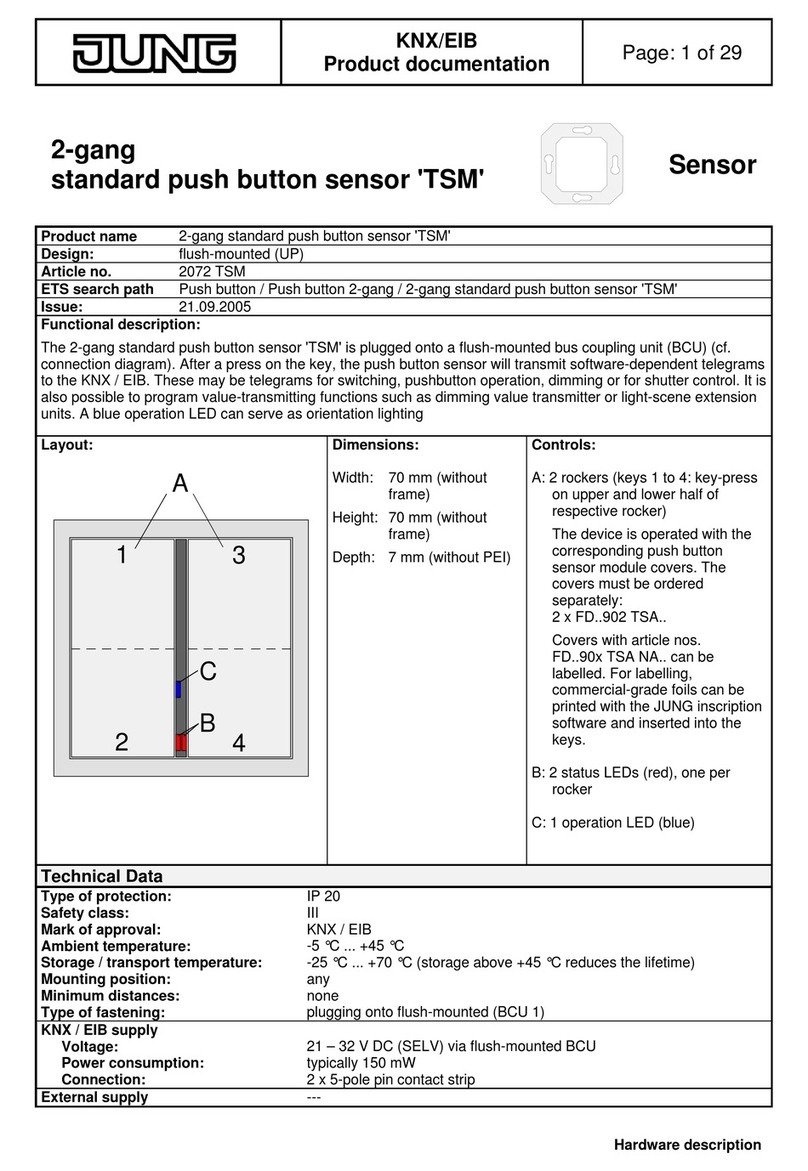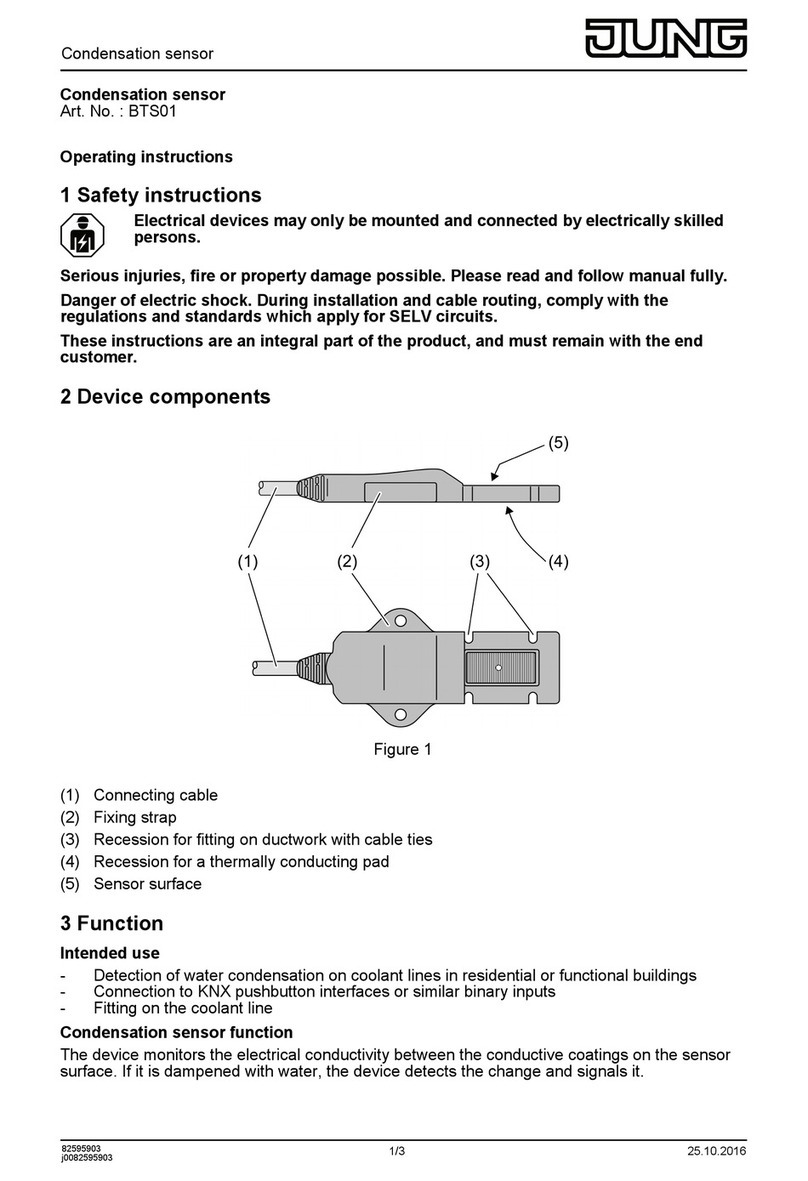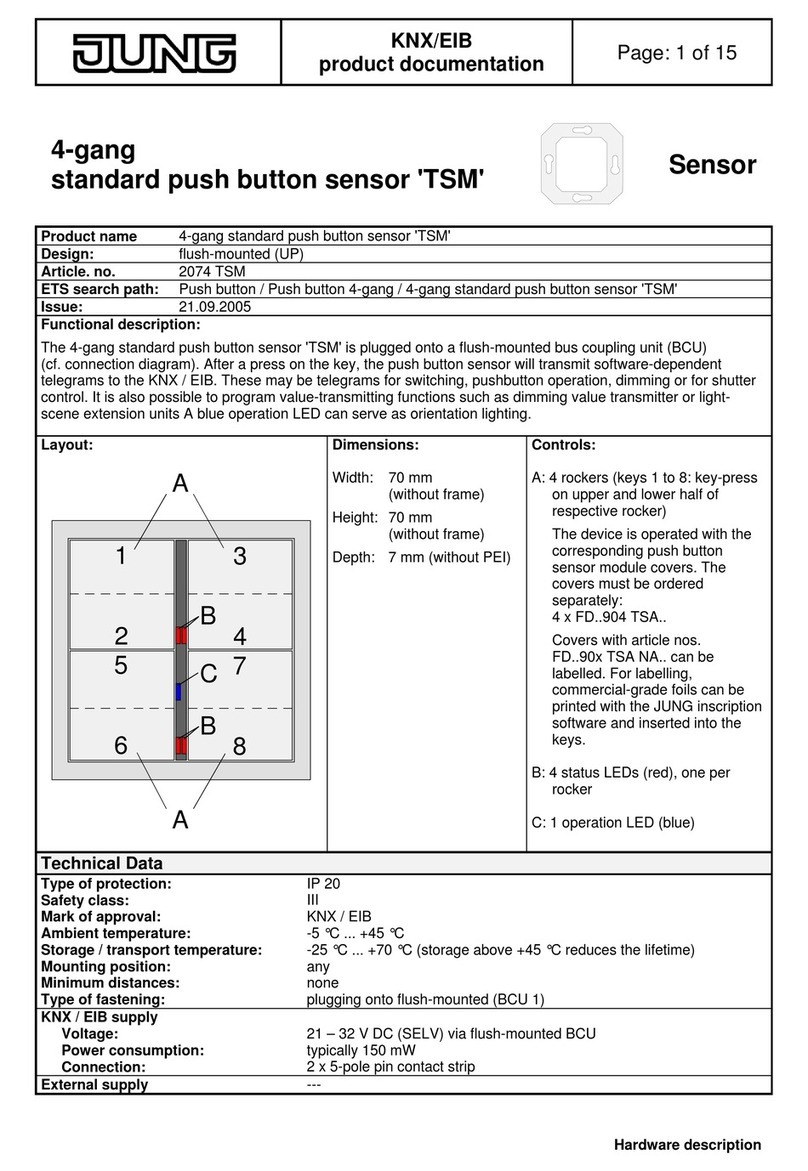
Art. No. DS 4092 TS
1 Product definition
1.1 Product catalogue
Product name: Rotary sensor
Use: Sensor
Design: FM (flush-mounted)
Art. No. DS 4092 TS
1.2 Function
The KNX rotary sensor combines the functions of a push-button sensor with extension
connection and a bus coupling unit in a single device. The KNX rotary sensor follows the
familiar operation concept of a press/rotary dimmer with incremental encoder. The rotary knob
serves as a rocker function (turn to the left <-> turn to the right, e.g. dimming), the push-button
serves as a push-button function (e.g. switching).
The KNX rotary sensor can be combined with the covers of conventional rotary dimmers in
which KNX operating functions can be integrated conventionally into electrical installations.
The function of the rotary knob in the ETS alternative can be configured to the following
functions: switching, dimming, Venetian blind, 1 byte value transmitter, 2-byte value transmitter,
scene extension. Depending on the direction of rotation, the commands of the functions (ON,
OFF / brighter, darker / UP, DOWN...) are transmitted to the bus via the communication objects
assigned to the rotary knob.
The push-button can be configured to the following functions: switching, dimming, Venetian
blind, 1 byte value transmitter, 2-byte value transmitter, scene extension, 2-channel operation.
The function of the rotary knob can be combined with the function of the push-button or can be
operated independently of it, too.
The KNX rotary sensor additionally has three extension inputs that affect the KNX separately
from the push-button and rotary knob. The connected potential-free switch or button contacts
are downloaded to the device via a shared reference potential. The inputs can transmit
telegrams independent of each other for switching or dimming, for shutter control or transmitter
application (dimmer value transmitter, light scene extension).
The connection of 230 V signals or other external voltages to the extension inputs is not
permitted!
The device has an acoustic buzzer (Piezo signal transmitter) that can be used for
acknowledgement or status signalling. Additionally, the integrated buzzer can signal a warning
or ring tone, an alarm and an active programming mode. The volume of the buzzer can be
differentiated in two states by means of a 1-bit communication object. The buzzer volume for
alarm signalling can also be configured separately.
In addition, the device has two red Status LEDs. These Status LEDs can - only when Version
1.2 of the application is used - be switched on or off independently of one another, function as a
button-press display or as a status display (control via separate communication object), as
required. When functioning as a button-press display, the left LED displays operations of the
push-button, whilst the right LED displays operations of the rotary knob.
The use of both Status LEDs is optional. If the visual display functions are required, then special
design covers with a control window must be used (see accessories).
The device has an energy saving mode to save electrical energy during operation. If the
function is used, the device switches to the energy saving mode after a preset time without
operation or controlled by an external telegram to a separate object. In the energy saving mode,
essential operation and signalling functions of the device are switched off. The acoustic signal
transmitter and extension inputs are then without any functions. The energy saving mode can
be deactivated by operating the rotary knob or push-button or by a special telegram. Afterwards,
the device is fully functional again.
A bus coupling unit is already permanently integrated in the KNX rotary sensor, allowing the
device to be connected directly to the bus line during commissioning. It requires no additional
power supply for operation. For project design and commissioning of the device, ETS3.0 from
Version "d" onwards, ETS4 from version 4.0.7 onwards or ETS5 is required.
Page 4 of 143
Product definition
